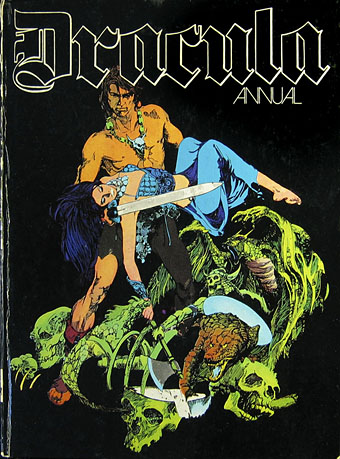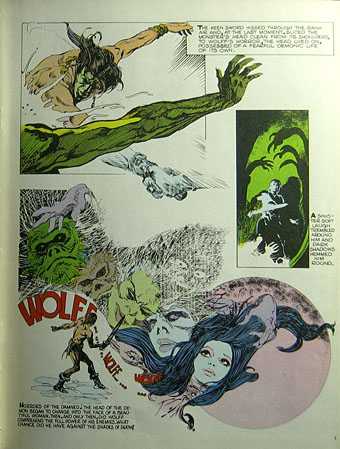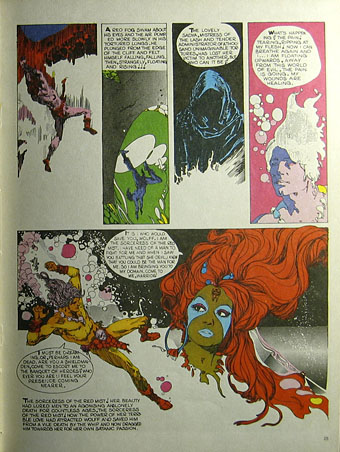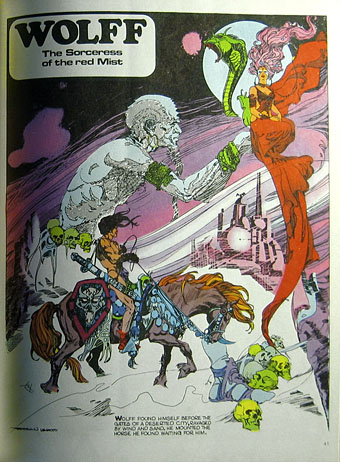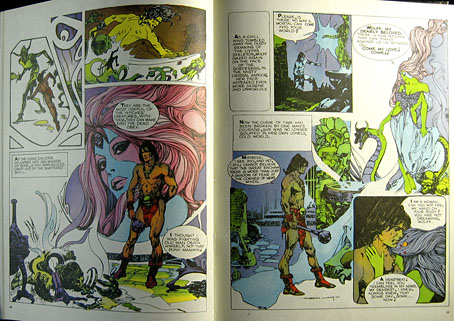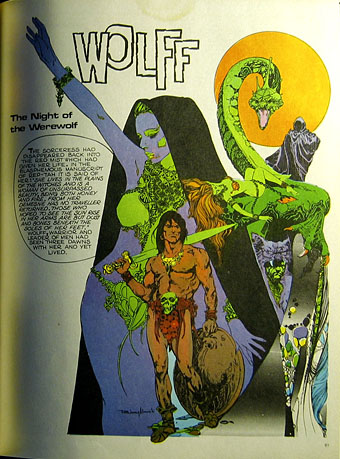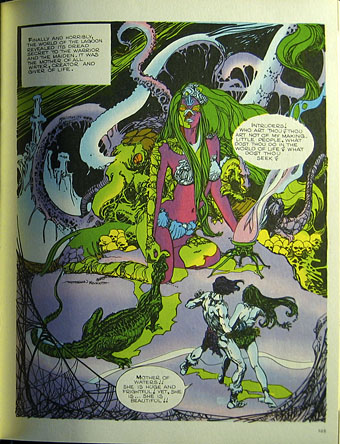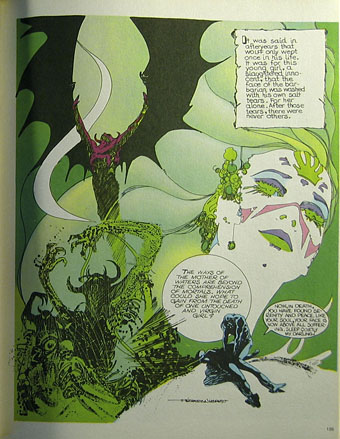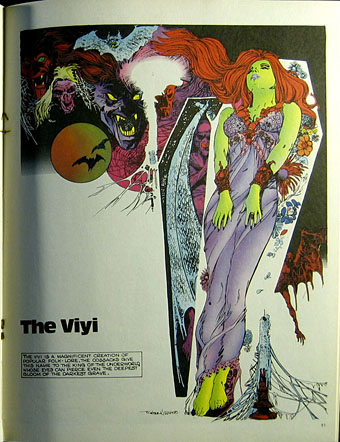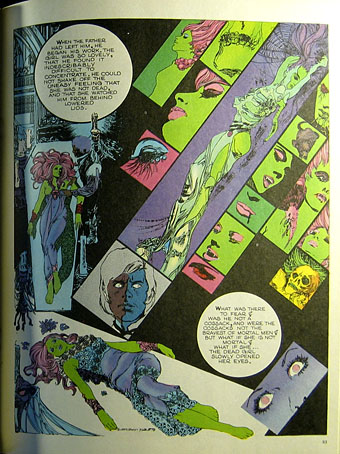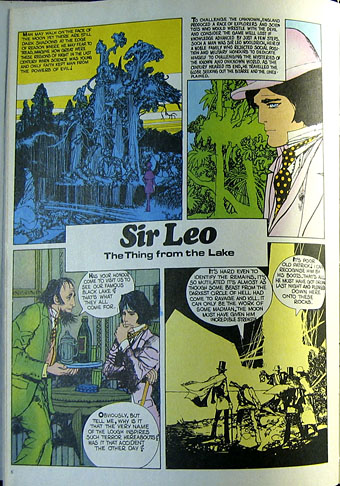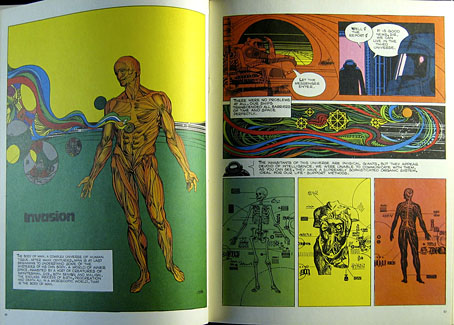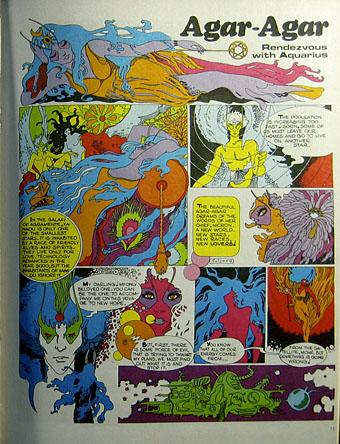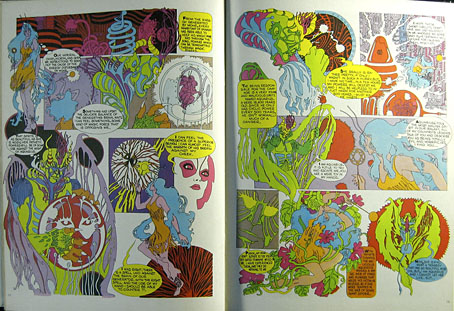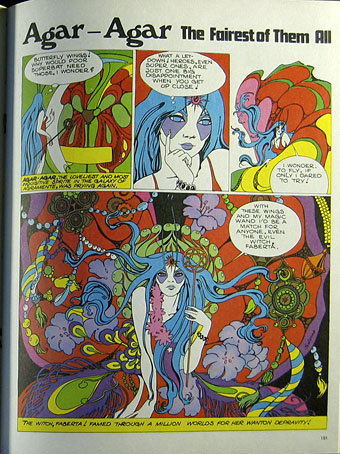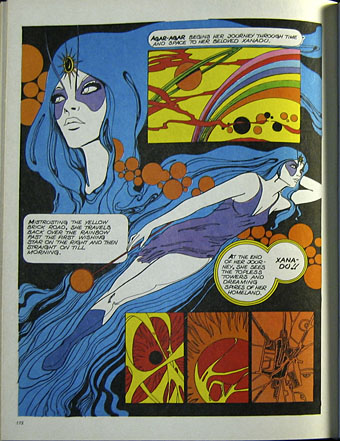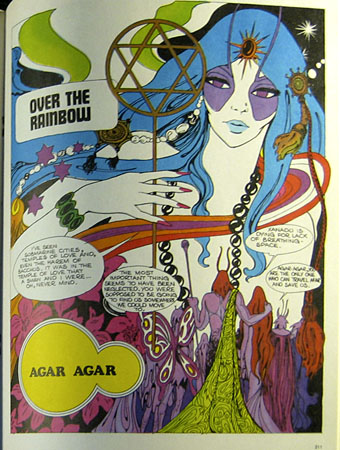A comment by Modzilla in last month’s post about psychedelic comic book Saga de Xam is responsible for this recent book purchase. Dracula was a full-colour large-format comic book from notorious pulp imprint New English Library (later to be distributors for my colleagues at Savoy Books) that repackaged Spanish horror strips for a British audience. The comic ran for 12 issues in the early 1970s; the pages shown here are from the hardback annual that gathered all the issues into a single volume. I remember this being around in secondhand shops for years but I never paid it any attention at all so the artwork has been a revelation.
NEL’s Dracula isn’t much of a horror comic, despite its title; Dracula himself only appears in one story, and that’s a jokey throwaway piece. The two main episodic strips are Wolff, a Conan clone searching for his lost wife in a world ravaged by witches, werewolves and other supernatural threats; and Agar-Agar, a deliriously psychedelic picaresque concerning a hyper-sexual “sprite” (or a hippyish young woman with blue hair and magic powers) from the planet Xanadu. Everything in the book is redolent of the early 1970s when strains of psychedelia were still percolating through pop culture. Watered-down psychedelia used to bore me because I wanted the authentic stuff but forty years on this kind of work is much more attractive.
Wolff is the work of Esteban Maroto whose splash pages and inventive layouts give Barry Windsor-Smith’s Conan the Barbarian (which was running at this time) some serious competition. Wolff is very much in the Conan mould—he even shouts “Crom!” at crucial moments—a pawn of supernatural forces he often fails to comprehend. The artwork in Smith’s Conan was often praised for its details and decor but the Art Nouveau influence in Maroto’s work is much more overt. Maroto’s flame-haired witches are like Alphonse Mucha sirens—one panel even borrows from Mucha’s Salammbô—and he’s no slouch with the Frazetta-like demons either. The scripting is perfunctory but I don’t mind that when it turns up pages like these. There’s also a brief nod to Lovecraft when “R’Lyeh” is mentioned.
The Viyi is a one-off piece by Esteban Maroto. A simple vampire tale but with lavish drawings.
Sir Leo by José Beá is yet another English occult detective. These stories are supposed to be set in the late 19th century but Sir Leo resembles Jerry Cornelius much of the time. There’s a more explicit homage to Lovecraft in this first tale when Sir Leo consults the Necronomicon. The book advises him to use a silver bullet against the tentacled lake monster, a solution I can’t imagine Lovecraft approving.
José Beá and Enric Sió provided a number of one-off pieces of which this one (by Beá) is among the more psychedelic entries. Sió’s pieces are well-drawn but often bizarrely incoherent or simply plain bizarre. One of the strangest concerns a Second World War pilot whose plane begins to melt for no apparent reason. When he finally bails out, his parachute opens then transforms into a giant cephalopod which swallows him whole. The creature floats away into the clouds. The End.
Alberto Solsona’s Agar-Agar is a delight throughout, with ravishing visuals and a witty, self-deprecating script. Agar-Agar meets a variety of characters from mythology and fairy tale on her travels; many of these wish her harm but she outwits them all. One story takes a dig at American comics with a conceited superhero, Superbat, who tries to keep Agar-Agar prisoner. He’s no match for the sprite’s magic powers.
The collected Dracula may still be found relatively cheaply although copies are evidently more scarce than they used to be. For those who want to see more there’s the US edition from Warren at the Internet Archive. This is only half the contents of the UK book—volume 2 never appeared—but it features several of the strips shown here. For more information about the original issues see Dracula of the newsagents at Lew Stringer’s site.
Previously on { feuilleton }
• Saga de Xam revisited
• Philippe Caza covers
• Saga de Xam by Nicolas Devil
• L’Amour by Didier Moreau
• Gilles Rimbault redux
• Raymond Bertrand paintings
• Raymond Bertrand’s science fiction covers
• Gilles Rimbault revisited
• Druillet’s vampires
• The Art Nouveau dance goes on forever
• The art of Ran Akiyoshi, 1922–1982
• The art of Gilles Rimbault
• The art of Jim Leon, 1938–2002
• The art of Bertrand

